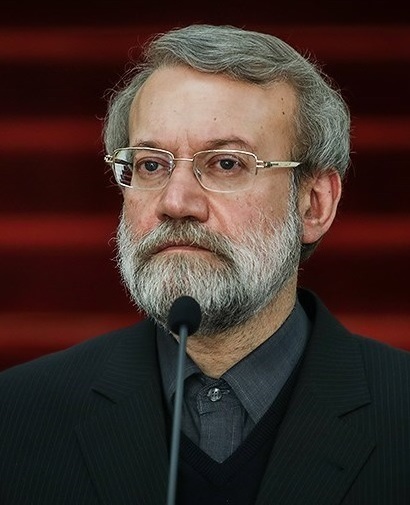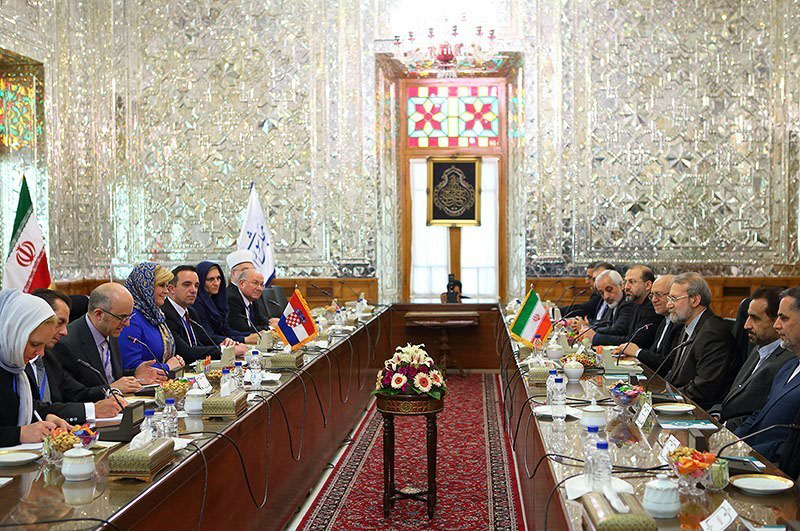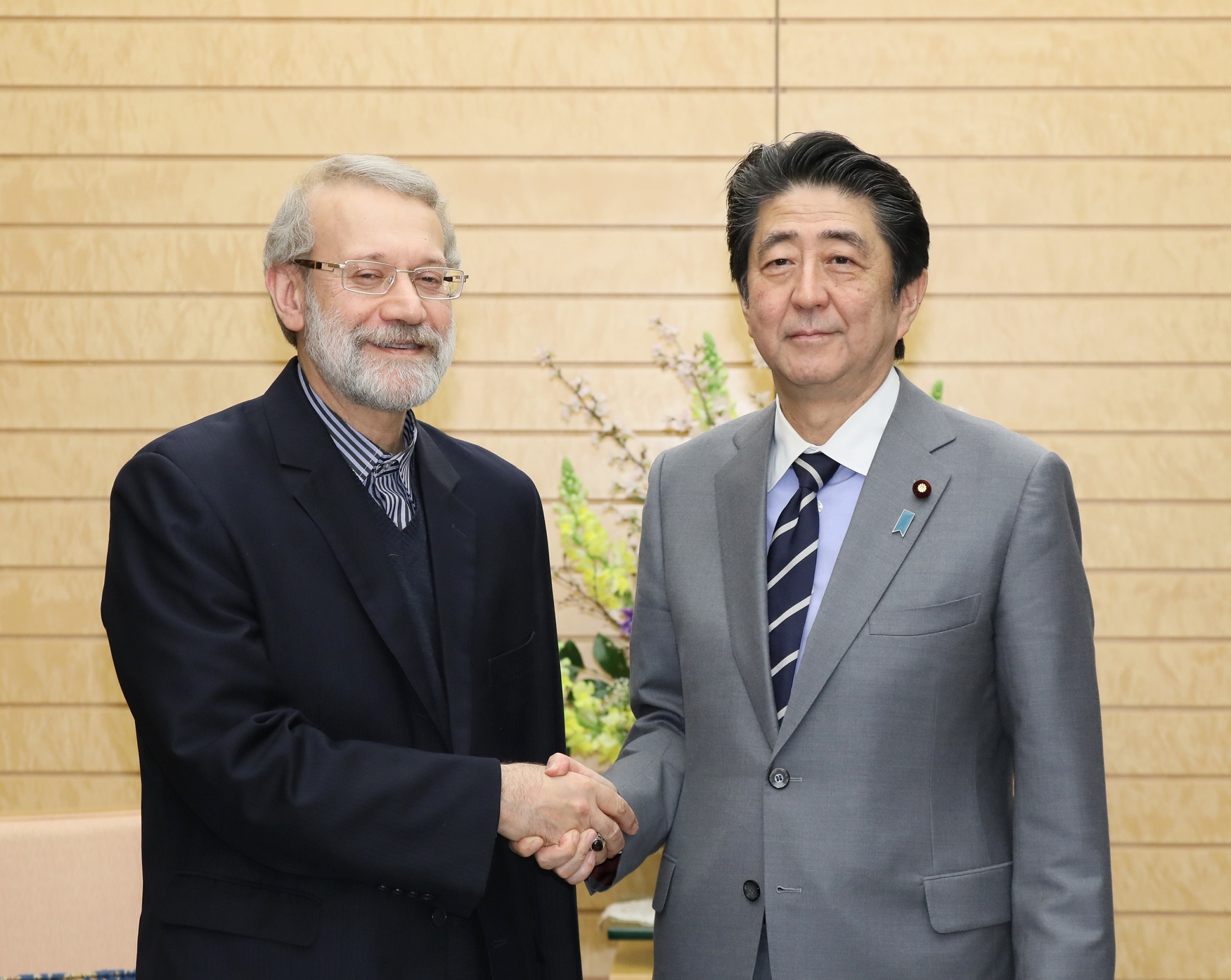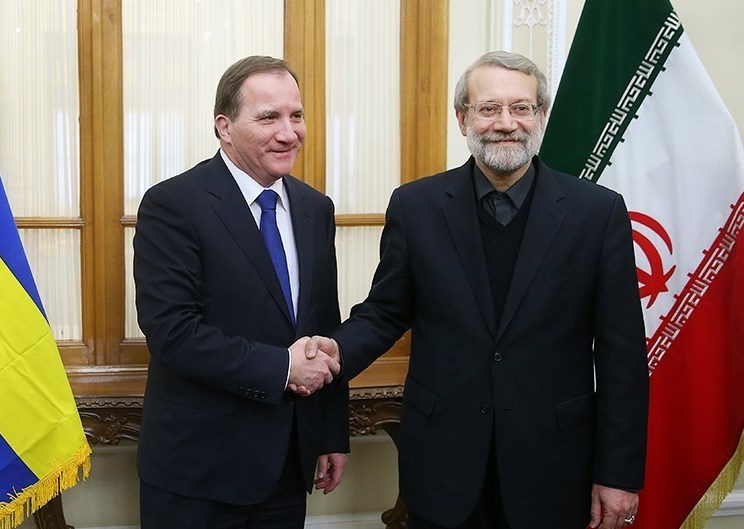1. Early Life and Background
Ali Larijani's early life and educational pursuits laid the groundwork for his extensive political and academic career, rooted in a family with deep religious and intellectual ties.
1.1. Birth and Family
Ali Ardeshir Larijani was born on 3 June 1958 in Najaf, Iraq, to Iranian Persian parents. His family originated from Amol in Mazandaran Province, Iran, and was known for its religious and aristocratic background. His father was Mirza Hashem Amoli, a leading Ayatollah and prominent cleric. Larijani's parents had moved to Najaf in 1931 due to political pressures from the ruler Reza Shah, but they returned to Iran in 1961.
Larijani comes from a highly influential family, often referred to as the "Larijani Dynasty" due to the significant roles held by his relatives in Iran's political and religious establishment. His brothers include:
- Sadeq Larijani, who served as the President of the Judicature and is a member of the Guardian Council.
- Mohammad-Javad Larijani, who is the Secretary of the Judiciary's Human Rights Council and a senior advisor to the Supreme Leader.
- Fazel Larijani, Iran's former cultural attaché in Ottawa.
- Bagher Larijani, a faculty member of Tehran University of Medical Sciences.
Additionally, Ali Larijani is a cousin of Ahmad Tavakkoli, as their mothers are sisters. He is also the son-in-law of Morteza Motahhari, a renowned Ayatollah, religious leader, and scholar.
1.2. Education
Larijani's academic background is diverse, combining religious studies with modern sciences and philosophy. He is a graduate of the Qom Seminary, a major center for Shia theological education. He also holds a Bachelor of Science degree in computer science and mathematics from Aryamehr University of Technology, which is now known as Sharif University of Technology, from which he graduated in 1979.
He further pursued his studies at the University of Tehran, where he earned both a master's degree (1981) and a PhD (1983) in Western philosophy. Initially, Larijani had intended to continue his graduate studies in computer science, but he changed his academic focus to philosophy after consulting with his future father-in-law, Morteza Motahhari. Larijani's philosophical expertise is reflected in his published works, which include books on prominent philosophers such as Immanuel Kant, Saul Kripke, and David Lewis. He is also a faculty member of the School of Literature and Humanities at the University of Tehran.
2. Career
Ali Larijani's career spans various critical sectors of the Iranian government, including military, media, and high-level political offices, showcasing his deep integration into the Islamic Republic's power structure.
2.1. Military and Early Government Service
Larijani began his public service as a former commander in the Islamic Revolutionary Guard Corps (IRGC), holding the rank of Brigadier general. He served in the IRGC from 1981 to 1993 and participated in the Iran-Iraq War. His military roles included serving as the Deputy Chief of the Joint Staff of the IRGC until 1992.
Following his military service, Larijani transitioned into government roles. He served as the Deputy Minister of Labor and Social Affairs. Subsequently, he was appointed as the Deputy Minister of Information and Communications Technology. From 1986 to 1989, he held the position of Vice Minister of Revolutionary Guards for Legal and Parliamentary Affairs. When the Ministry of Revolutionary Guards merged into the Ministry of Defence, he became the Vice Minister of Defence for Parliamentary Affairs in 1989.
2.2. Media and Cultural Leadership
Larijani played a significant role in shaping Iran's media and cultural landscape. He served as the Minister of Culture and Islamic Guidance from August 1992 to February 1994, with an acting period from July to August 1992. He took over this role from Mohammad Khatami during the presidency of Akbar Hashemi Rafsanjani.
His most prominent role in media was as the Head of the Islamic Republic of Iran Broadcasting (IRIB), the state-controlled media corporation. He was appointed to this position by Ali Khamenei in February 1994, succeeding Mohammad Hashemi Rafsanjani. Larijani held this post for ten years, until May 2004, when he was succeeded by Ezzatollah Zarghami. He also had an earlier stint as the chief operating officer of IRIB from 1981 to 1982. In August 2004, after his tenure at IRIB, he became a security adviser to Supreme Leader Ali Khamenei.
2.3. Supreme National Security Council
Larijani's role as the Secretary of the Supreme National Security Council (SNSC) was a pivotal period in his career, especially concerning Iran's foreign policy and nuclear program. He was appointed to this position by President Mahmoud Ahmadinejad on 15 August 2005, succeeding Hassan Rouhani. He also served as one of the two representatives of the Supreme Leader of the Islamic Revolution, Ali Khamenei, to the council from 1996 to 2008, alongside Hassan Rouhani.
As SNSC Secretary, Larijani effectively functioned as Iran's top negotiator on national security issues, including the country's controversial nuclear program. He was known for advocating a more pragmatic approach to negotiations with international counterparts, a stance that sometimes differed from President Ahmadinejad's. On 25 April 2007, as Iran's chief nuclear envoy, Larijani stated his expectation of "new ideas" from senior European Union official Javier Solana during talks aimed at resolving the deadlock between Tehran's refusal to freeze its nuclear activities and the United Nations Security Council's demands. His resignation from the secretary position was announced and accepted on 20 October 2007 by Gholam-Hossein Elham, the Iranian government's spokesman, after President Ahmadinejad had reportedly turned down his previous resignation attempts. He was succeeded by Saeed Jalili.
2.4. Speaker of the Parliament
Larijani's tenure as the Speaker of the Islamic Consultative Assembly (Majlis) marked a significant period of his political leadership. He won a seat from Qom in the March 2008 parliamentary election. In May 2008, he was elected Speaker of the Parliament, officially taking office on 5 June 2008, after serving as acting speaker from 28 May to 4 June 2008. He succeeded Gholam-Ali Haddad-Adel.
Larijani was re-elected as chairman of the parliament in 2009, 2012, and 2016. In the 2012 Iranian legislative election, he was the highest-receiving candidate from the Qom district. He was sworn in for his new term as Speaker on 11 June 2012. During his time as Speaker, he publicly implied on 21 June 2009 that authorities had sided with a particular candidate in the presidential election, though he did not specify which one. However, on 22 October 2012, he denied allegations that he had congratulated Mir Hossein Mousavi following the 2009 election. His final term as Speaker concluded on 28 May 2020, and he was succeeded by Mohammad Bagher Ghalibaf.
2.5. Expediency Discernment Council
After concluding his term as Speaker of the Parliament, Ali Larijani was appointed as a member of the Expediency Discernment Council by Supreme Leader Ali Khamenei on 28 May 2020. This council is a powerful advisory body to the Supreme Leader and also serves to mediate disputes between the Parliament and the Guardian Council. Larijani had previously served on the Expediency Discernment Council from 17 March 1997 to 28 May 2008. During his earlier tenure, the council was chaired by Akbar Hashemi Rafsanjani, and during his later tenure, by his brother, Sadegh Larijani. His continued membership on this council underscores his sustained influence in Iran's political and policy-making processes.
3. Political Activities and Elections
Ali Larijani's political career has been characterized by his participation in several key elections, his shifting affiliations within Iran's complex political spectrum, and his evolving ideological stance.
3.1. Presidential Candidacies
Larijani has made multiple attempts to secure the presidency of Iran, facing varying degrees of success and, notably, repeated disqualifications.
In the 2005 Iranian presidential election, Larijani was considered the most significant presidential candidate of the conservative alliance. He was supported by various conservative groups, including the Islamic Society of Engineers (ISE) and the "Council for Coordination of the Forces of the Revolution." However, he ranked sixth in the first round, securing only 5.94% of the votes, proving less popular than other conservative candidates like Mahmoud Ahmadinejad (who eventually won) and Mohammad Bagher Ghalibaf.
His later attempts in the 2021 Iranian presidential election and the 2024 Iranian presidential election were met with significant controversy. In May 2021, Larijani declared his bid for the presidency, but the Guardian Council, responsible for vetting candidates, disqualified him from running. This decision was widely seen as astonishing to both conservative and reformist factions, given Larijani's long career as a prominent "Islamic Republic insider" who had been part of the top echelons of power since the 1979 revolution. The Guardian Council did not publicly announce the specific reason for his disqualification.
Similarly, in May 2024, following the death of President Ebrahim Raisi, Larijani again submitted his application for candidacy in the snap presidential election. However, he was once more disqualified by the Guardian Council. These repeated disqualifications of a well-established figure like Larijani have raised concerns and fueled debates about the fairness and democratic nature of Iran's electoral processes.
3.2. Political Affiliations and Ideology
Larijani's political alignment has evolved throughout his career, moving from a staunch conservative stance to a more moderate or independent position. In the 1990s, during his time in the Hashemi Rafsanjani cabinet, he was considered to maintain membership and views aligned with the Islamic Coalition Party (Motalefeh). Iranian scholar Mehdi Moslem, in his 2002 book "Factional Politics in Post-Khomeini Iran," identified Larijani as a member of the Motalefeh and part of the "traditional right." Payam Mohseni, a fellow at the Belfer Center for Science and International Affairs, further classified Larijani as a leading figure in the "theocratic right" camp.
In the 2008 Iranian legislative election, Larijani was one of the leaders of the Principlists Pervasive Coalition and a key figure in the United Front of Principlists, both prominent conservative alliances. However, by the 2016 Iranian legislative election, while he led the Followers of Wilayat faction, he was notably backed by the reformist List of Hope and stated he was running as an independent candidate.
This shift has led to Larijani being described as a center-right politician who has "slowly distanced himself from the Principlist camp" and as a "conservative-turned-moderate." He is known for his pragmatic approach, particularly his support for the nuclear deal pursued by the Hassan Rouhani administration, and his occasional disagreements with figures like Mahmoud Ahmadinejad. Larijani maintains close associations with several influential political figures, including Interior Minister Abdolreza Rahmani Fazli, Parliament's presiding board spokesman Behrouz Nemati, and parliament's research center head Kazem Jalali.
4. Public Image and Evaluation
Ali Larijani's public image reflects a complex political figure who has navigated Iran's power structures for decades. According to a poll conducted in March 2016 by Information and Public Opinion Solutions LLC (iPOS) among Iranian citizens, Larijani held a 45% approval rating and a 34% disapproval rating, resulting in a net popularity of +11%. Approximately 11% of voters did not recognize his name.
As a long-standing insider within the Islamic Republic, Larijani has been instrumental in shaping national policies across various domains, from media and culture to national security and parliamentary affairs. His strategic shifts in political affiliation, from staunch conservative to a more moderate and independent stance, indicate a pragmatic approach aimed at maintaining relevance and influence within Iran's dynamic political landscape.
However, his political career has also been marked by significant controversies, particularly his repeated disqualifications from presidential elections by the Guardian Council in 2021 and 2024. These decisions, especially given his deep ties to the establishment, have been widely seen as surprising and have fueled criticisms regarding the fairness and democratic integrity of Iran's electoral system. While his supporters might view his long tenure as a sign of stability and experience, critics may point to these disqualifications as indicative of a system that limits genuine political competition and undermines democratic processes, even for figures who have served at the highest levels of power. His influence on democratic development and social progress remains a subject of ongoing discussion, as his career reflects both the adaptability and the constraints within the Iranian political system.
5. Personal Life
Ali Larijani's personal life is closely intertwined with a powerful network of influential families in Iran, reflecting the deep connections within the country's political and religious elite.
5.1. Family and Relatives
Ali Larijani is married to Farideh Motahhari, the daughter of the renowned Ayatollah Morteza Motahhari. Together, they have four children, including a daughter named Fatemeh Ardeshir-Larijani, who studied at the University Hospitals Cleveland Medical Center in the United States.
As detailed in the "Birth and Family" section, Ali Larijani is one of five prominent brothers, all of whom have held significant positions in Iran's government, judiciary, or academic institutions. This extensive network of influential relatives, including his brothers Sadeq Larijani, Mohammad-Javad Larijani, Fazel Larijani, and Bagher Larijani, along with his cousin Ahmad Tavakkoli, solidifies the Larijani family's status as a powerful and deeply entrenched dynasty within the Islamic Republic.
5.2. Health
In April 2020, Ali Larijani tested positive for COVID-19 and was subsequently placed in quarantine. This health event occurred during the early stages of the global pandemic.
6. International Relations and Diplomacy
Ali Larijani has been a key figure in Iran's international relations, particularly through his role in nuclear negotiations and his interactions with foreign leaders.
As Chief Nuclear Negotiator of Iran from 2005 to 2007, he was at the forefront of Iran's diplomatic efforts concerning its nuclear program. During this period, he engaged with senior European Union official Javier Solana in crucial talks aimed at resolving the international deadlock over Iran's nuclear activities. Larijani's approach to these negotiations was often described as pragmatic, seeking diplomatic solutions amid international pressure and United Nations Security Council demands.
Larijani has also undertaken several diplomatic visits to various countries, fostering bilateral relations. He met with Croatian President Kolinda Grabar-Kitarović in 2016 and Swedish Prime Minister Stefan Löfven in 2017, demonstrating his engagement with European leaders.


His visits to Japan highlight a specific aspect of his international engagement. In 2019, he met with Japanese Prime Minister Shinzo Abe. Notably, in 2010, Larijani visited Hiroshima and Nagasaki, cities with profound historical significance due to the atomic bombings. During his visit to the Nagasaki Atomic Bomb Museum, he stated that the museum was "meaningful and valuable" for informing the world about what he described as US war crimes. He emphasized a strong stance against nuclear proliferation, remarking that "if even one nuclear bomb exists in the world, it is a threat to all humanity. All weapons of mass destruction should be banned." He also conveyed to Nagasaki Mayor Tomihisa Taue that Iran would not manufacture nuclear weapons, underscoring Iran's official position on the issue amidst international scrutiny of its nuclear program.

